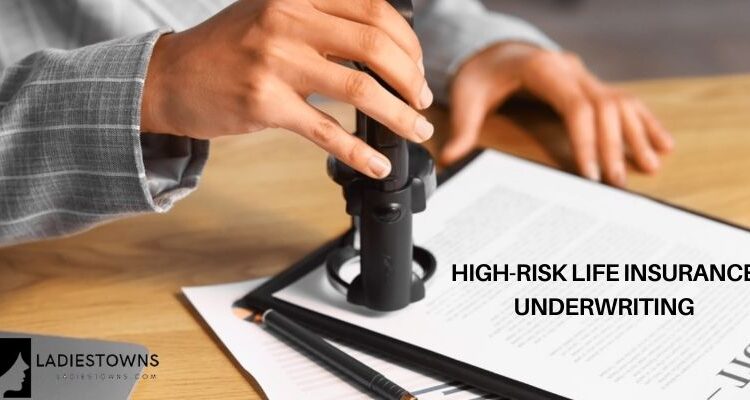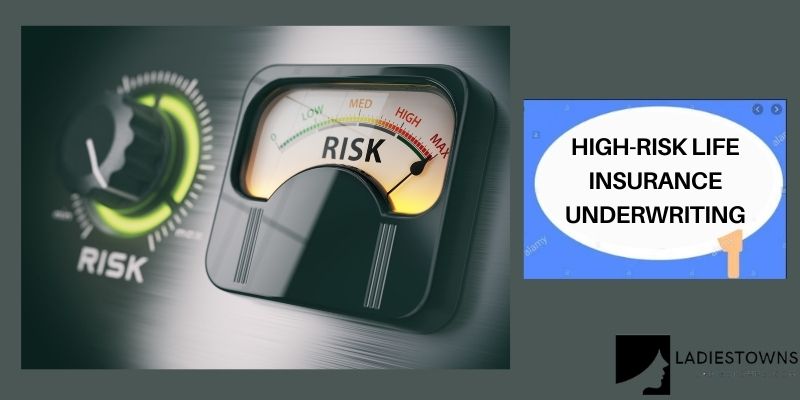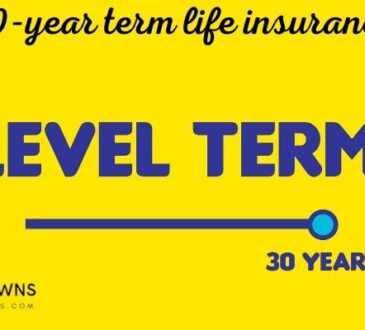
The process of High-risk life insurance underwriting involves giving an insurer the data it needs to assess your risk profile so that a business may offer you a term life or whole life policy that is correctly priced based on your particular circumstances.
Insurance companies will collect data from you and from your medical records. In order to access pharmaceutical databases, motor vehicle reports, public records, and financial statements (particularly if you want a high-value coverage), you must sign a consent form that complies with HIPAA. To obtain the best life insurance policy, it’s a good idea to seek many estimates as each provider calculates risk differently even if the underwriting procedure is essentially the same across all of them. ladiestowns.com will provide for you some information about High-risk life insurance underwriting.
What Is Life Insurance Underwriting?

Every candidate for a life insurance coverage must go through the underwriting process. It is the procedure the insurer use to examine a wide range of individual risk indicators with the ultimate purpose of determining the applicant’s overall risk level. An insurer will determine the type of coverage that a candidate qualifies for, the amount of coverage that they are eligible for, and the cost of their life insurance based on this assessment.
A thorough medical checkup and a health questionnaire from the applicant are standard parts of underwritten plans. You can purchase life insurance through accelerated underwriting without having to have a medical exam, but these plans are more expensive and have smaller death benefit limitations for your loved ones. Accelerated underwriting uses methods and tools that gauge relative mortality based on a range of actions.
Depending on the complexity of each application, underwriting can be finished in as little as 24 hours or as long as six weeks.
The High-risk Life Insurance Underwriting Process

The underwriting procedure varies slightly for each insurer but is generally the same for most businesses. This is how the procedure goes:
- Take a look at your application.
- See if you qualify for coverage from the insurance provider.
- Specify the kind of coverage and terms the insurance provider should provide.
- Look for options that might lower the number of claims going forward.
- Find strategies to protect yourself if there are any complications with your application by negotiating with agents or brokers.
- If you’ve filed many claims, had difficulties completing payments, or if there are other comparable red flags, review your background.
Application and Documentation
re you start filling out your application, acquire the necessary information and documentation to save time and prevent delays. What you will need is as follows:
- A duplicate of your license or other photo ID
- List of medications and dose information
- Doctors you’ve seen in the last five years by name
- Details and dates of any recent procedures you’ve undergone
Risk Assessment and Underwriting Guidelines
Normal High-risk life insurance underwriting considerations include the following in determining the premium you will pay:
- Age: Younger policyholders have a longer window to pay into their policies because they live longer on average. Less High-risk life insurance underwriting translates into lower premium costs.
- Health status and medical history: A medical checkup may be necessary before you are given a policy. You’ll pay extra for coverage if you have a history of illnesses like cancer, diabetes, heart disease, or if there have been serious illnesses or inherited diseases in multiple generations.
- Occupation: You might anticipate to spend extra for a policy if you work in a High-risk life insurance underwriting like a firefighter, pilot, police officer, or several construction professions.
- Gender: Due to their longer life expectancies, ladies pay less for life insurance.
- Lifestyle: Your premiums may increase if you partake in risky pastimes like mountain climbing or skydiving, or if you smoke or drink excessively.
- Term life insurance is typically the most economical sort of policy.
- Amount of coverage: Your premium costs will increase as your coverage level increases.
- Credit standing: When establishing premiums, certain states permit insurers to take a credit-based and credit history insurance score into account.
Medical Underwriting and Underwriting Classes

Super preferred, preferred, and standard risk classifications are frequently used by insurance firms. From firm to company, the requirements for each class are comparable. Applicants may be labeled as substandard or outright denied coverage if they don’t match the requirements for these classes.
Super Preferred Risk Class: A member of this category has good general health, doesn’t partake in risky pastimes, and doesn’t work in a hazardous environment. You cannot have used tobacco products within the previous five years, abused drugs or alcohol during the previous ten years, or had cancer or heart disease in the past. You may not additionally have a parent who passed away from cancer or a cardiovascular condition before the age of 60, or occasionally 65, depending on the insurer.
Risk Class: The profile of the preferred risk class is comparable to that of a super preferred candidate. Even though they might be slightly overweight, taking medicine for certain medical illnesses, or having hazards in their family’s medical history, they are nevertheless generally in good health. If your diabetes is under control and, in some situations, if your anxiety and depression are under control, you may be eligible for this class.
Common Risk Class.Most people belong to this category. People will be more likely to experience health problems, have higher obesity rates, or need to take medication for many ailments. You don’t need to have perfect driving records, and smoking is treated more leniently in this category. Some insurance companies will cover marijuana use if you abstain from cigarette use for a year.
For people who have serious health issues or have a limited track record of managing a health problem, a poor rating system is employed. Alcohol misuse or treatment, severe asthma, bipolar disease, epilepsy, multiple sclerosis, and Type 1 diabetes are among the conditions that underwriters will examine.
conclusion
The application process for High-risk life insurance underwriting. Based on risk variables, actuarial calculations, and ratings from the insurance sector, you will receive the right coverage for your particular scenario.
Working with an High-risk life insurance underwriting requires being sincere and thorough. If the insurance provider finds out that you lied after the fact, your coverage can be cancelled. If the incident is reported to the Medical Information Bureau, other life insurers may be able to view it if you submit an application for coverage in the future.





